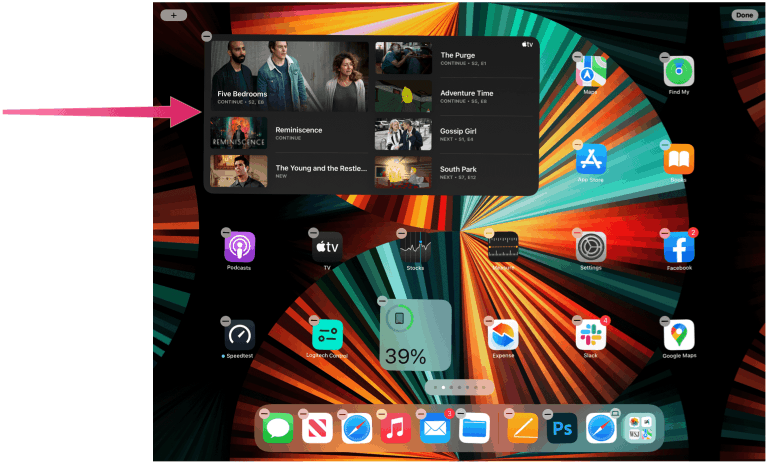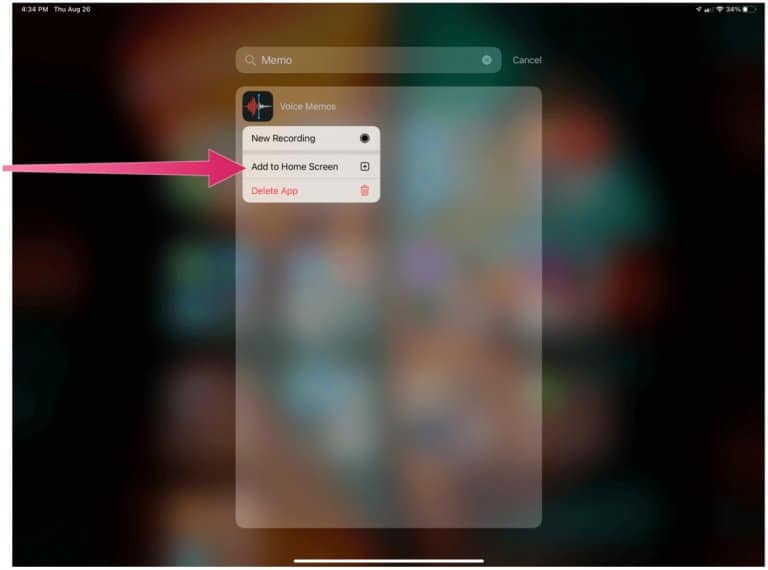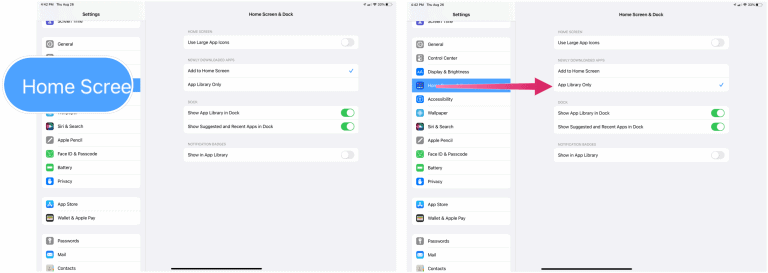Apple often introduces new software features to the iPhone before they hit the iPad. With iPadOS 15, the world’s leading tablet finally gets two popular iPhone features, widgets and the app library. Here’s how both functions work on the world’s # 1 tablet.
IPad widgets
You are not wrong. Yes, there were already widgets on the iPad with iPadOS 14. However, they were only widgets from today’s view that were placed on the first page of the home screen. Apple has unleashed widgets in iPadOS 15, and now they look very similar to what you would find on the iPhone.
On the iPad, widgets come in different sizes and styles and are available for native and third-party applications. Not all applications have a set of widgets. To access the widget creation screen, you have to press hard on an empty place on the home screen of your iPad and then click on the plus sign icon in the upper left of the screen. You can also click on the icon of an existing application to obtain the same result.
Creating widgets
The widget screen is arranged to highlight the different options available. You can search for widgets using the built-in Search or tap on one of the samples on the widget screen. You can also use scrolling on the left side of the screen. The sample widgets, like the real ones, are dynamic and show the conditions in real time, when it is the case. For example, a news widget provides up-to-date news headlines, just like a clock widget displays the current time.

Select a widget
To select and install a widget from the screen:
- Click on the widget you want.
- Scroll from right to left to find the type and size of the widget you want. Widgets on the iPad come in various sizes, including small, medium, large, and extra large for some applications.
- Please select Add Widget to choose an option.

Next:
- Move the widget to your preferred location on the iPad home screen.
- Please select Done When it’s over.


Smart Stack Widgets
Among others, you will find a Smart Stack widget that automatically rotates the widgets to show the most relevant information throughout the day. Once installed, the widget also allows you to quickly cycle through different screens. In the example below, you’ll see a Smart Stack that is currently displaying News. However, by scrolling up and down, you can visit other screens.

Siri Suggestions
Siri Suggestions is Apple’s most unique widget. Automatically places app icons and other information on your home screen that changes based on your usage patterns. For example, the widget can include icons of your favorite applications or links to your most visited websites. Other times, it may suggest that you make a FaceTime call to someone you usually contact around an hour a day.
Tap on the widgets
Widgets are a good way to break the monotony of the traditional iPad home screen. They are also functional information centers that, when touched, allow you to switch from the home screen to applications to perform other tasks.
Adjust widgets
There is not much you can do with the widgets installed on the iPad other than move or delete them. To adjust the widgets:
- Press hard on the widget.
- Tap the icon remove widget at the top left of the application icon to remove the widget from the home screen.
- OR drag the widget to a new location.

Using the app library on iPad
Until now, there were only three ways to organize the apps on the iPad. You could move them manually, add them to user-defined folders, or let Apple manage them by resetting the home screen layout. The new iPad app library doesn’t eliminate those options. Instead, it gives you more options. You can find the iPad app library after from the home screen pages on your iPad with iPadOS 15 installed.
Before proceeding further, it is important to note that the iPad application library is separated from the normal iPad home screen. Therefore, when you download content from the App Store for the first time, the application will appear in both sections. In the following example, the Slack app has been downloaded from the App Store. Note that it is now available on both the iPad home screen and the iPad app library.

But why?
Why would you want the same app icon to appear in both locations? Maybe not. With the iPad app library, you can now reserve the iPad home screen only for the apps you use the most, eliminating clutter that might have accumulated on your device over the years.
Exploring the iPad app library
As applications are added to your iPad, they are automatically added to automatically generated category folders in the iPad application library. Immediately after being downloaded, they also appear in the Recent Adds folder at the top right of the iPad App Library. You’ll also find a suggestions folder in the upper left of the iPad app library. Recommended apps appear here based on your current history.
Due to space limitations, iPad App Library folders only show previews of some of the apps they contain. Each folder displays large and small icons. Tapping any of the large icons opens the application; tapping one of the small icons opens the entire category folder.

The search bar
At the top of the iPad app library, you’ll find a search bar. Tap on it to find an up-to-date list of all the apps installed on your device arranged alphabetically. You can scroll to see the application you want or start typing the application name in the Search Bar.

Deleting and organizing apps on iPadOS 15
Do you have so many app-laden home screens on your tablet that it has become a challenge to find content to enjoy? Introducing the iPad App Library provides a much-needed order, allowing you to remove little-used apps from the home screen while still having them installed on your device.
To delete an app on iPad in iPadOS 15:
- Press hard on the app icon like you’ve always done. As you do so, the apps on the home screen start to move.
- Touch the “–”At the top left of the application you want to remove.
- Choose Remove app to remove the app from your device completely.
- Or touch Move to app library to remove the app from your device’s home screen and keep it in the iPad app library.

Add apps to the home screen
If you change your mind and want to have an application on the home screen again, you can do so from the iPad application library.
To add an app:
- Press hard the app in the iPad application library.
- Choose Add to home screen. The application is now on the home screen.

Hiding Home Screen Pages
In iPadOS 15, you can also hide the home screen pages for the first time. By hiding these pages, you can access the iPad app library much faster. To hide the pages:
- Long press on a blank area from your home screen.
- Press the app page dot icons at the bottom-middle of your screen.
- Uncheck the application pages you want to hide.
- Please select Done in the upper right corner.

Reverse these steps to add app pages again.
Get rid of the home screen
By default, new apps appear both on the home screen and in the iPad app library. You can change this setting so that new apps only appear in the iPad app library. For it:
- Press the Settings app on your home screen.
- Choose Home Screen and Dock.
- Please select App library only on Newly downloaded apps.

As you can see, big changes are coming to the iPad with iPadOS 15. The addition of (real) widgets and a library of apps should make it easier to find the content you want and view it in fun new ways.



